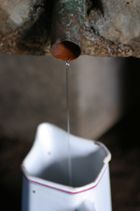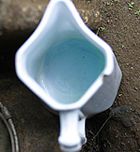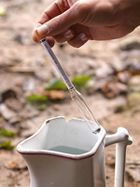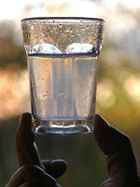Basic Distillation Rules

Distillation is used for numerous applications, including the distillation of essential oils and spirits. Our Copper Alembics are perfectly suitable for these applications nevertheless certain precautions should be taken to avoid personal injury as a result of negligence or the continuous consumption of poor results.
Distillation is a basic chemical science which involves the separation of a chemical substance into its different components based on difference in the boiling point of each fraction. This is done by heating a mixture in an alembic pot so the fractions that make up the mixture begin to evaporate, these are conducted via a connecting arm or swan neck into a condenser where they are chilled and revert to their liquid state.
Ethanol alcohol evaporates at 78.3ºC at sea level and water at 100ºC but a mixture of the two components will evaporate between 78.3ºC and 100ºC depending on the ratio of ethanol alcohol and water. The more volatile components or those fractions with a lower boiling point will tend to evaporate first so the resultant vapours will be more enriched with those components with a lower boiling point.
A fermented batch may be composed of ethanol, other higher alcohols such as methanol also acetone, various esters, water and furfurals. The more volatile components such as acetone, methanol and the various esters are undesirable; methanol for instance has been known to cause blindness. It is common practice to throw away the first portion of the distillate, this way you will get rid of the methanol. Separate and discard the first 50ml If distilling a 25 L wash or mash in a reflux still or 100ml per 20L wash from the rest of the distillate if using a traditional alembic, these fractions are known as foreshots or heads and are distilled first.
The result of any distillation is divided into three separate parts in the following order: heads, hearts and tails. The best and desired portion of the distillation is obtained from the hearts.


Cut off points have to be determined between heads, hearts and tails, the art lies in when to start collecting the hearts and when to stop. Experienced distillers use their senses to determine cut off points, they monitor the taste and smell of the heads, these usually have a very sharp taste and are foul smelling. The hearts portion of the distillate (the ethanol) should be totally transparent and odourless. The tails contain a large amount of compounds with higher boiling points, such as the higher alcohols and furfural. These compounds can spoil the taste of the spirit if the collection is carried on too long. The cut off point for the tails can be identified by the taste, smell and milky cloudiness of the distillate. This is done by collecting a few drops on the back of a spoon every so often and checking what it tastes or looks like on a regular basis. The tails are usually saved to include in the next batch as a considerable amount of ethanol alcohol can still be recovered. Cut off points may also be established based on temperature (see our brass thermometer) or alcoholometer readings.
Temperature readings may not determine the cut off point with the greatest accuracy though they may be helpful in determining the end of a complete distillation run. For instance when the vapour temperature nears 98° C most of the alcohol has already been distilled and it becomes unnecessary to continue the distillation process. The percentage at which to do the cut may depend on the flavour profile you may want to obtain and the kind of wash distilled. As a rule for fruit mashes the cut off point for tails may be 25% alcohol and for grain washes 18%, this is not a hard and fast rule and the distiller has to toggle with these values to obtain the desired flavour profile. Most distillates are double distilled to further purify the distillation results and raise the alcohol percentage. A second distillation may also concentrate the flavour further. The cut off point for a second distillation in a fruit mash may be as low as 60%. For grain washes a cut off point may be established at 58% or higher.


